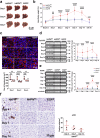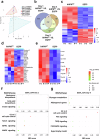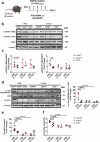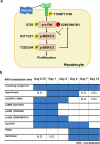Enhancement of adult liver regeneration in mice through the hepsin-mediated epidermal growth factor receptor signaling pathway
- PMID: 39702454
- PMCID: PMC11659619
- DOI: 10.1038/s42003-024-07357-1
Enhancement of adult liver regeneration in mice through the hepsin-mediated epidermal growth factor receptor signaling pathway
Abstract
Given the widespread use of partial hepatectomy for treating various liver pathologies, understanding the mechanisms of liver regeneration is vital for enhancing liver resection and transplantation therapies. Here, we demonstrate the critical role of the serine protease Hepsin in promoting hepatocyte hypertrophy and proliferation. Under steady-state conditions, liver-specific overexpression of Hepsin in adult wild-type mice triggers hepatocyte hypertrophy and proliferation, significantly increasing liver size. This effect is predominantly driven by the catalytic activity of Hepsin, engaging the EGFR-Raf-MEK-ERK signaling pathway. Significantly, administering Hepsin substantially enhances hepatocyte proliferation and facilitates liver regeneration following a 70% partial hepatectomy. Crucially, the proliferation induced by Hepsin is a transient event, without leading to long-term adverse effects such as liver fibrosis or hepatocellular carcinoma, as evidenced by extensive observation. These results offer substantial potential for future clinical applications and translational research endeavors in the field of liver regeneration post-hepatectomy.
© 2024. The Author(s).
Conflict of interest statement
Competing interests: The authors declare no competing interests.
Figures







References
-
- Jiang, M., Ren, J., Belmonte, J. C. I. & Liu, G. H. Hepatocyte reprogramming in liver regeneration: biological mechanisms and applications. FEBS J.290, 5674–5688 (2023). - PubMed
-
- Gilgenkrantz, H. & Collin de l’Hortet, A. Understanding liver regeneration: from mechanisms to regenerative medicine. Am. J. Pathol.188, 1316–1327 (2018). - PubMed
MeSH terms
Substances
LinkOut - more resources
Full Text Sources
Molecular Biology Databases
Research Materials
Miscellaneous

